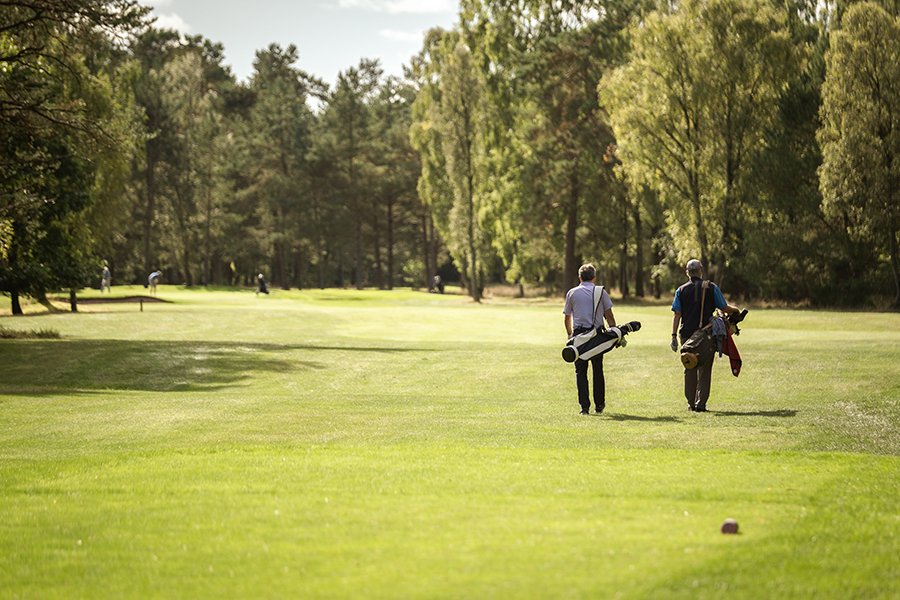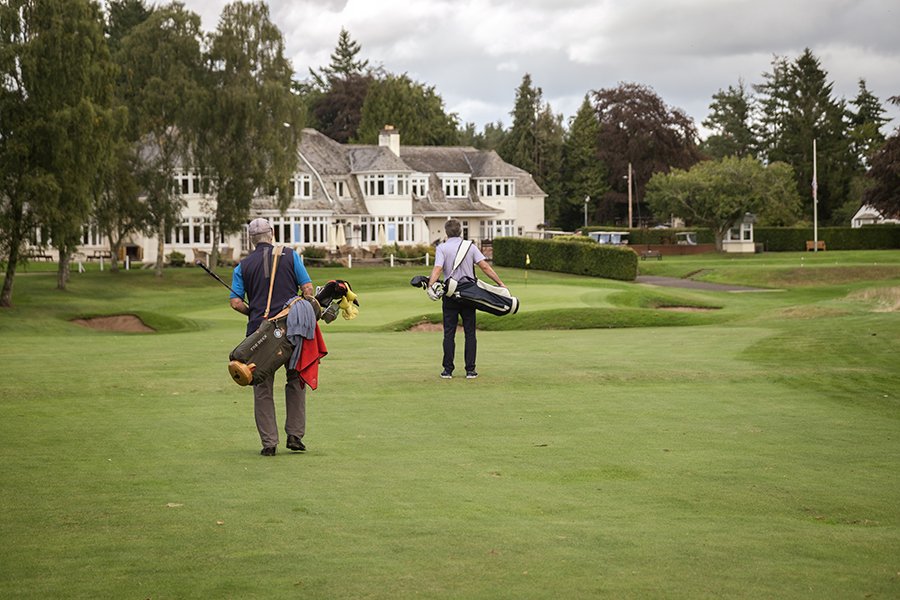Playing Blairgowrie
Another pheasant wanders nonchalantly across our tee, appearing from the bracken on his daily commute and oblivious to the fact I’ve tee’d up. I’m beginning to think this is a regular thing here at Blairgowrie, for he’s the third one already and we’re only on the 5th hole. It’s hard to concentrate on that tapering valley of clear air between the tree tops out in front when nature’s doing its best to distract you at every turn. A polite flap of my arms moves him on, disappearing into the undergrowth as silently as he appeared. Focus. Deep breath. The pheasant’s piercing call catches me on the downswing, and my ball arcs into the distant silver birch and pine, never to be seen again. It’s the only birdie I’ll see on this hole.
Playing any of the three courses at Blairgowrie Golf Club is a joy. Founded as a private members' club in 1889 it is regularly visited by golfers from all over the globe, such is the draw of this pocket of magnificent Perthshire countryside. Each course consistently features in Scotland's Top 100 Golf Courses, and it’s not difficult to see why. It has hosted a wealth of international tournaments, notably a young Greg Norman securing his first European win here in 1977. His arrival in the car park driving a small Vauxhall Samba with a hand-painted white shark on the driver’s door is the stuff of legend. Everyone hears about the wonderful sense of isolation between the trees, just you and nature and scarcely a sight of anyone else during your round. Such was the skill of the course designers that they managed to give us 45 slices of heaven in a relatively small estate.
Alister MacKenzie’s Rosemount course leads the golfer away from the impressive white, turreted grey-roofed clubhouse down an opening par-4 that rises gently, pulling you round to the left through an increasingly tightening avenue of pine and birch. Heather is everywhere, and missing it feels like a bonus. James Braid had a hand in making the course more challenging, and an ability to draw the ball on demand is soon rewarded on hole 4 where being long and right is fraught with wooded danger. Doglegs, canny bunkering and beautiful greens tempt the miraculous from the golfer every time. The theme of “straight or draw” continues until the 11th where the opportunity to open up the shoulders comes along… and if ever a power fade could be called perfect, now was its time. My ball arc’d so far right that it disappeared down the avenue of trees, leaving me a short shot from the fairway into another perfect green. This surely is where dreams become reality.
After a very relaxing night at a nearby hotel near the end of Golf Course Road, where our collected counts of pheasant, deer, buzzards and squirrels quickly began to match the number of lost balls and birdies, it was back to the well-stocked Professional’s Shop to check-in for our second game over the tougher Lansdowne Course. Designed by Peter Allis and Dave Thomas, the Lansdowne has hosted a number of top regional and international Championships. It offers an even more challenging test, tightly routed through swathes of heather, those pine and silver birch trees, and putting a premium on accuracy from the tee. Take note that seven of its twelve par-4 holes are under 400 yards, and the three par-3s are all under 150 yards: for a course that stretches to near 7,000 yards off the tips, accuracy, not length, is the key to a presentable scorecard. Its larger tiered greens and tilted fairways throw less-than-perfect shots off line and, if anything, being able to draw the ball is once again a real benefit on this course. For those of us who favour unfeasibly long approaches from the 1st cut or worse down the right-hand side of the fairway, the Lansdowne gives you plenty value for money. There are sections where the landing areas open up, but more often than not the trees become dark green walls down the final flanks of fairway, hugging the greens so tightly that anything not delivered on line will have more than a bunker to overcome to make a bogey or worse. And yet, it’s such a beautiful setting that these challenges are embraced, and each unexpected result keeps bringing you back for more.
Whilst we saw it from a distance, we didn’t give ourselves enough time to play Blairgowrie’s other gem, the Wee Course. Designed originally by local residents when the club was formed, they played golf over nine holes on the land close to the Black Loch which belonged to the Dowager Marchioness of Lansdowne, from whom the course took its name. The Wee Course shows significant influences of Alister MacKenzie. Heathland in character, it’s made up of a combination of par-3s and 4s, and is so stunningly serene and picturesque that it’s a must-play, regardless of its size.
Host to the Junior Ryder Cup when the main event was played nearby at Gleneagles, Blairgowrie sits proudly amongst the very best. It offers something special though to those who take on its challenge: moments of real mindfulness. This chance to lose yourself in nature, playing a game that can make you insanely happy and sharing that unique experience with friends is one not to be missed.



